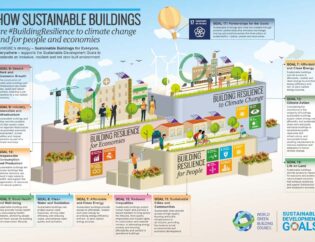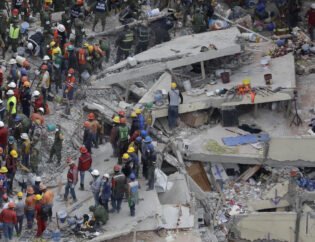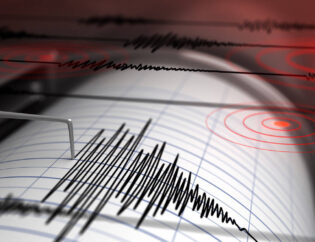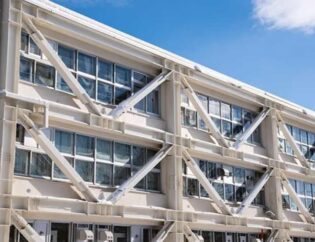
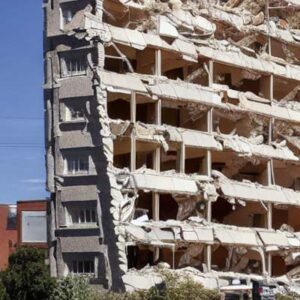 Let’s talk earthquake-proofing!
Let’s talk earthquake-proofing!
Unreinforced masonry buildings are a common sight in many cities and towns around the world.
While these structures often have historic and architectural value, they are also inherently vulnerable to earthquakes. As seismic activity continues to threaten regions around the world, it is increasingly important to earthquake-proof these buildings to ensure the safety of residents and the preservation of historical landmarks. This article provides an overview of earthquake-proofing techniques for unreinforced masonry buildings, including seismic retrofitting, compliance with earthquake standards, and cost-effective approaches. Additionally, it covers the challenges and safety considerations associated with retrofitting these structures in order to provide a comprehensive guide for property owners and construction professionals.
Understanding Earthquake-Proofing & Unreinforced Masonry Buildings
What is Unreinforced Masonry?
Unreinforced masonry buildings are constructed using brick, concrete, or stone blocks without any steel or other reinforcement materials. Most of these buildings were constructed before the 1960s and are still standing today. However, they are highly vulnerable to natural disasters, especially earthquakes.
History of Unreinforced Masonry Construction
Unreinforced masonry construction was widely used in the United States from the 1800s until the 1930s. It was a popular choice because it was relatively inexpensive and easy to build. However, as the population grew and cities expanded, construction techniques shifted towards more earthquake-resistant materials and practices, making unreinforced masonry buildings less common.
Characteristics and Vulnerabilities of Unreinforced Masonry Buildings
Unreinforced masonry buildings have a number of inherent vulnerabilities that make them highly susceptible to damage during an earthquake. Because of their age and construction methods, they lack strength and flexibility, making them more likely to collapse or suffer significant structural damage. They are also prone to cracking and crumbling, which can weaken the overall structure of the building over time.
 The Dangers of Earthquakes on Unreinforced Masonry Buildings
The Dangers of Earthquakes on Unreinforced Masonry Buildings
How Earthquakes Impact Unreinforced Masonry Buildings
During an earthquake, the ground moves in different directions and creates vibrations that cause the building to shake. This shaking can cause the walls and roof of the building to collapse or separate from the foundation. The shaking can also cause the brick or stone blocks to crack or crumble, which can weaken the overall structure of the building.
Case Studies on Earthquake Damage to Unreinforced Masonry Buildings
Unreinforced masonry buildings have been severely damaged or destroyed in past earthquakes, including the Great San Francisco earthquake of 1906 and the 2010 Haiti earthquake. These events have highlighted the need for proper earthquake-proofing techniques in these types of buildings.
Why Unreinforced Masonry Buildings Are at Higher Risk During Earthquakes
Unreinforced masonry buildings were not constructed to withstand the seismic forces that occur during an earthquake. This makes them highly vulnerable to damage or collapses during a seismic event. Additionally, many of these buildings are located in areas where earthquakes are common, further increasing their risk.
Earthquake Proofing Techniques for Unreinforced Masonry Buildings
Seismic Retrofitting: What is it and How it Works
Seismic retrofitting is the process of adding structural reinforcements to existing buildings to make them more resistant to seismic activity. This includes adding steel beams, concrete columns, and other reinforcement materials to strengthen the building’s structure.
Common Techniques for Earthquake Proofing Unreinforced Masonry Buildings
Some common techniques for earthquake-proofing unreinforced masonry buildings include adding steel or concrete shear walls, adding steel or concrete columns, and installing roof or floor anchoring systems. These techniques work together to strengthen the building’s structure and help distribute the seismic forces more evenly.
 Strengthening the Foundation: Seismic Retrofitting for Unreinforced Masonry Buildings
Strengthening the Foundation: Seismic Retrofitting for Unreinforced Masonry Buildings
Foundation Strengthening Techniques for Unreinforced Masonry Buildings
Foundation strengthening techniques for unreinforced masonry buildings typically involve adding steel or concrete to the foundation to increase its strength and stability. This can include adding new foundation walls or footings or reinforcing the existing ones.
Wall Anchoring Systems for Unreinforced Masonry Buildings
Wall anchoring systems can help stabilize the walls of an unreinforced masonry building, preventing them from collapsing or separating from the foundation during an earthquake. This can include adding steel cross-bracing to the walls or installing anchor bolts to hold the walls in place.
Roof and Floor Anchoring Systems for Unreinforced Masonry Buildings
Roof and floor anchoring systems can help prevent an unreinforced masonry building from collapsing or losing structural integrity during an earthquake. These systems involve adding steel or concrete anchors to the roof or floor structure, which help distribute seismic forces more evenly and prevent the structure from collapsing.
Building a Safer Future: Compliance with Earthquake Standards for Masonry Structures
In the United States, earthquakes are a frequent occurrence in many regions, and preparing buildings to withstand them is critical to public safety. Compliance with earthquake standards is especially important for masonry structures, which are more prone to damage or collapse during an earthquake than other building types.
Current Seismic Requirements for Unreinforced Masonry Buildings
Unreinforced masonry buildings, in particular, present a significant risk during earthquakes. To address this risk, current seismic requirements mandate that these structures undergo retrofitting to improve their resistance to earthquakes. The retrofitting process aims to strengthen and modify key structural components to better endure earthquake forces. The retrofitting process typically aims to strengthen and modify key structural components such as wall tie-downs, foundation anchorage, and roof-to-wall connections.
How Compliance with Earthquake Standards Can Save Lives and Property
Compliance with earthquake standards is crucial for saving lives and property. In the event of an earthquake, retrofitting can prevent buildings from collapsing or sustaining significant damage. It also helps minimize the danger of falling debris that can cause injury or even fatalities. Moreover, retrofitting is also an investment in your property as it helps prevent costly damage and repairs.
 Cost-Effective Approaches to Earthquake-Proofing Unreinforced Masonry Buildings
Cost-Effective Approaches to Earthquake-Proofing Unreinforced Masonry Buildings
Fortunately, several cost-effective approaches are available for earthquake-proofing unreinforced masonry buildings.
Regarding earthquake-proofing, our SeismicFiber™ blend is typically up to 250% less expensive in material and labor costs. If you know your scope and needs, you can always get a quote for materials here.
Low-Cost Options for Earthquake-Proofing Unreinforced Masonry Buildings
One effective approach is to bolster the walls of a masonry building with steel bracing or steel cables. This technique is significantly cheaper than complete wall replacement, providing an affordable solution to retrofitting. Other cost-effective options include seismic caulking and the addition of extra wall reinforcement.
The Importance of Balancing Cost and Effectiveness in Earthquake Proofing Techniques
It’s essential to balance cost and effectiveness in selecting an earthquake-proofing technique. While cost-effective solutions are desirable, it’s crucial to ensure that these techniques effectively address the structural weaknesses of the building. It’s important to hire professionals with experience in seismic retrofits and building codes to ensure that the retrofitting techniques used are effective and adequate for your building.
Retrofitting Challenges and Safety Considerations for Unreinforced Masonry Buildings
While retrofitting unreinforced masonry buildings is crucial, it also presents several challenges and safety considerations.
Challenges in Retrofitting Unreinforced Masonry Buildings
One significant challenge in retrofitting these buildings is working with the existing structural elements, which may have deteriorated over time. Another challenge is ensuring that retrofitting doesn’t destroy the building’s historical significance or cultural value.
Safety Considerations During the Earthquake Proofing Process
Safety is a critical consideration in the earthquake-proofing process. Bolstering up the building’s structure may involve temporarily weakening certain parts of it, which can pose a hazard if not adequately addressed. Therefore, a professional engineering firm with experience in seismic retrofitting should handle the retrofitting process. Additionally, residents and workers around the construction zone should take appropriate measures, such as wearing protective gear, to minimize the risk of injury during the retrofitting process.
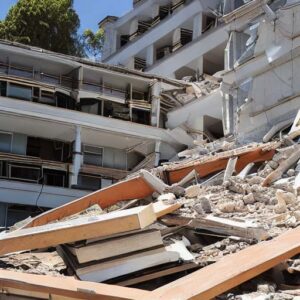 In conclusion, earthquake-proofing unreinforced masonry buildings is an essential investment in preserving public safety and property. Cost-effective retrofitting techniques that balance cost and effectiveness can help secure buildings against the destructive forces of an earthquake. Retrofitting can also present several challenges, but with proper planning and professional expertise, these issues can be addressed, ensuring that the retrofitting process is safe and efficient.
In conclusion, earthquake-proofing unreinforced masonry buildings is an essential investment in preserving public safety and property. Cost-effective retrofitting techniques that balance cost and effectiveness can help secure buildings against the destructive forces of an earthquake. Retrofitting can also present several challenges, but with proper planning and professional expertise, these issues can be addressed, ensuring that the retrofitting process is safe and efficient.
As seismic activity continues to pose a threat to unreinforced masonry buildings, earthquake-proofing techniques are crucial to ensure the safety and preservation of these structures. By understanding the vulnerabilities of unreinforced masonry buildings and implementing the appropriate retrofitting techniques, property owners and construction professionals can help safeguard these historical landmarks and protect human lives. With the help of this article, we hope that those responsible for these structures will be better equipped to take action and prepare for potential earthquakes.
Frequently Asked Questions Regarding Earthquake-Proofing
What is Unreinforced Masonry Construction?
Unreinforced masonry construction refers to buildings that use masonry elements (such as bricks, concrete blocks, or stones) for their structural support, without any steel or other reinforcing materials. These buildings are vulnerable to earthquakes and other natural disasters due to their inherent structural weaknesses.
What is Seismic Retrofitting?
Seismic retrofitting refers to the process of strengthening an existing building to withstand the effects of seismic activity. This can include adding reinforcing elements such as steel beams, columns, and braces, as well as increasing the capacity of the foundation or roof.
Are there any low-cost options for earthquake-proofing unreinforced masonry buildings?
Yes, there are several low-cost options for earthquake-proofing unreinforced masonry buildings. For example, adding anchor bolts to the foundation, which connect the building to the foundation and help prevent it from sliding during an earthquake, can be a cost-effective solution.
What should property owners consider when retrofitting an unreinforced masonry building?
Property owners should consider a variety of factors when retrofitting an unreinforced masonry building, including the building’s age and condition, the level of seismic risk in the area, and the local building codes and regulations. It is also important to work with experienced professionals who are knowledgeable about the specific needs of unreinforced masonry buildings.
We would love to connect! Please connect with us on LinkedIn to stay up to date with all that we do.
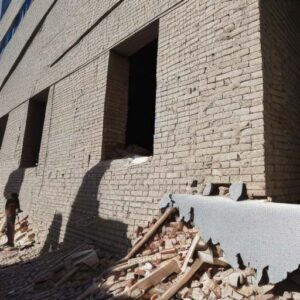 The Dangers of Earthquakes on Unreinforced Masonry Buildings
The Dangers of Earthquakes on Unreinforced Masonry Buildings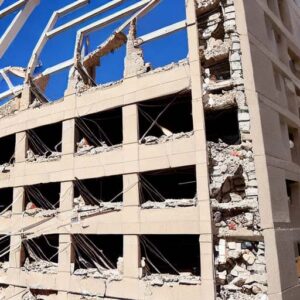 Strengthening the Foundation: Seismic Retrofitting for Unreinforced Masonry Buildings
Strengthening the Foundation: Seismic Retrofitting for Unreinforced Masonry Buildings Cost-Effective Approaches to Earthquake-Proofing Unreinforced Masonry Buildings
Cost-Effective Approaches to Earthquake-Proofing Unreinforced Masonry Buildings

